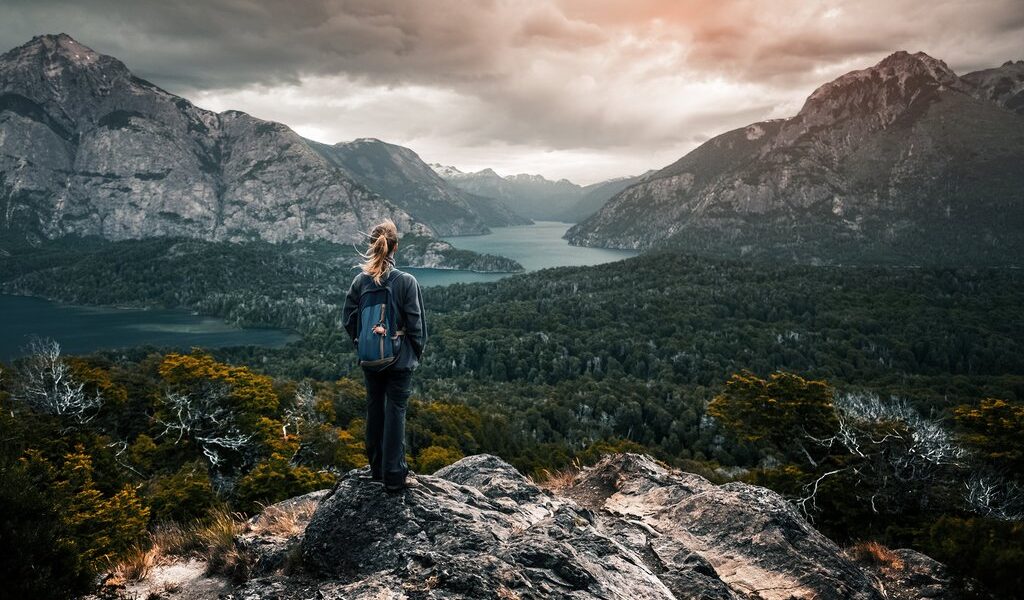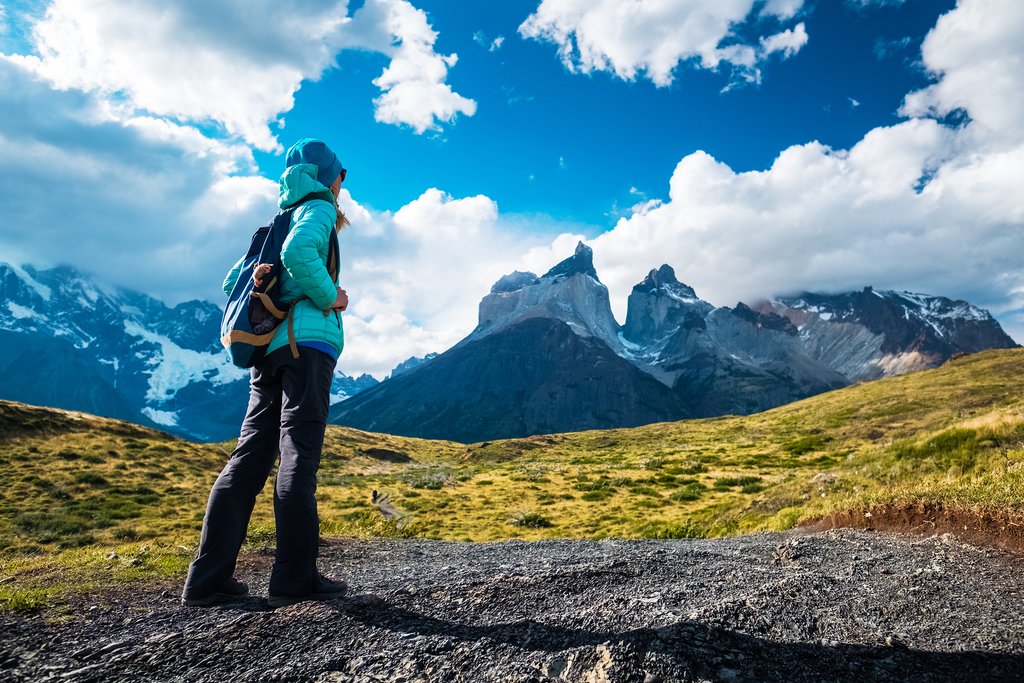
Rugged and romantic, Patagonia encompasses the southern cone of South America, including parts of both Argentina and Chile—and each side has unique advantages for travelers. Want to get as far off the beaten path as possible? Head to Chile. Deadset on visiting Tierra del Fuego and have limited vacation days? Argentina is right for you. Read on for highlights and things to consider when deciding where to go in Patagonia—you might just decide to see it all.
## Discovering the Wonders of Patagonia: A Comprehensive Guide
Deciding where to begin your Patagonian adventure requires careful consideration. The vast landscapes of Patagonia offer a diverse range of experiences, and the perfect destination depends on your interests, desired activities, and what you hope to gain from exploring this extraordinary region. This guide explores both Argentine and Chilean Patagonia, highlighting their unique characteristics to help you determine which side is the ideal fit for your travel aspirations.
| Argentine Patagonia | Chilean Patagonia | |
|---|---|---|
| When to go: | The optimal time to visit Argentine Patagonia is from December to mid-April, offering pleasant weather for outdoor activities. However, consider avoiding January if you prefer to avoid the largest crowds. | Chilean Patagonia is best explored from December to mid-April, mirroring the favorable weather conditions of its Argentine counterpart. |
| Who should go: | Argentine Patagonia caters to travelers seeking to experience Patagonia’s most iconic landmarks and those who value efficient and convenient in-country transportation options. | Chilean Patagonia appeals to intrepid travelers with ample time and a spirit for adventure, seeking to venture off the beaten path and immerse themselves in the region’s pristine natural landscapes. |
| Ideal trip length: | An ideal trip to Argentine Patagonia typically ranges from 5 to 9 days, allowing for a comprehensive exploration of its diverse attractions. | For a fulfilling experience in Chilean Patagonia, plan for a trip lasting between 7 and 10 days, enabling you to fully appreciate its vast wilderness and remote landscapes. |
| Fly into: | The primary gateway to Argentine Patagonia is through Buenos Aires, the vibrant capital city of Argentina. | To access Chilean Patagonia, the most convenient entry point is Santiago de Chile, the bustling capital city of Chile. |
| Best For: | Argentine Patagonia is a haven for trekking enthusiasts, wildlife observers, and those fascinated by the majestic glaciers that define the region. | Chilean Patagonia is renowned for its exceptional trekking opportunities, scenic road trips through breathtaking landscapes, and luxurious lodging options that cater to discerning travelers. |
| Major Highlights: | Argentine Patagonia boasts a plethora of iconic attractions, including the awe-inspiring Perito Moreno glacier, the captivating landscapes of Tierra del Fuego, the diverse wildlife of Peninsula Valdes, and the charming city of Bariloche. | Chilean Patagonia is home to remarkable landmarks such as the majestic Torres del Paine, a world-renowned trekking destination, and the Carretera Austral, a scenic highway that traverses the region’s unspoiled wilderness. |
| Things to consider: | Due to the vastness of Argentine Patagonia, it is advisable to utilize flights for efficient travel between destinations, allowing you to maximize your time and explore the region’s diverse offerings. | When planning your Chilean Patagonia adventure, bear in mind that circuit treks within the national parks often require multiple days to complete. Therefore, thorough preparation and ensuring you have all the necessary trekking equipment are essential for a safe and enjoyable experience. |
## The Best Time to Embark on Your Patagonian Journey
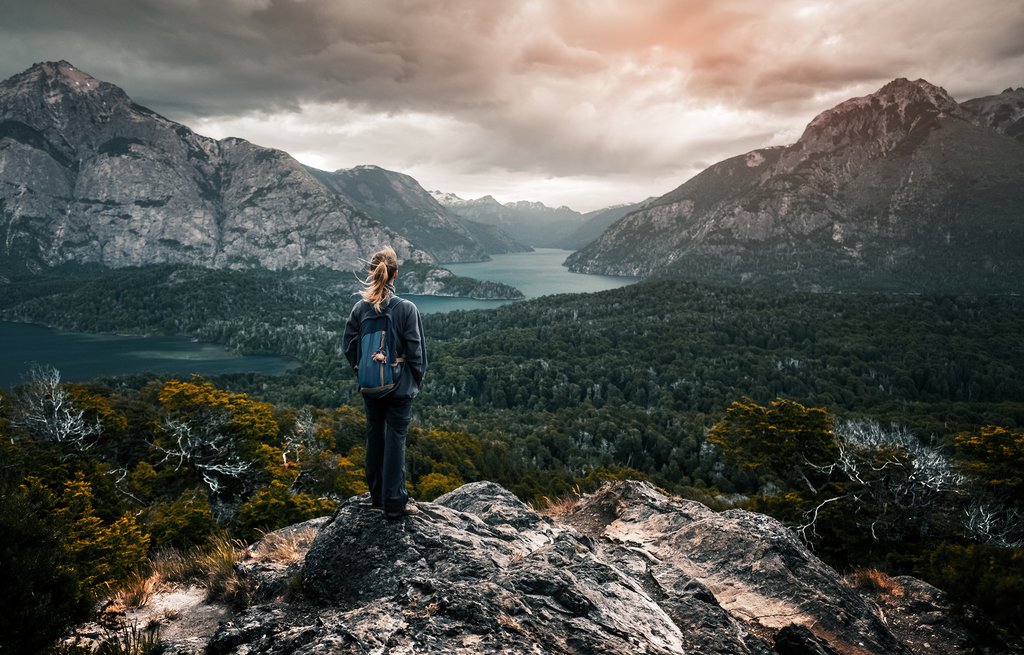
For those with a passion for trekking, the summer months, spanning from December to mid-April, present the most favorable conditions for exploring Patagonia’s breathtaking trails. However, it is important to note that trekking during the colder winter months, from mid-April to mid-November, is still possible, albeit with certain considerations. During the off-season, many hotels and restaurants in Patagonian cities and towns may temporarily close, and national parks may restrict their services. Additionally, all treks within national parks during the winter months require the guidance of a qualified professional due to safety concerns. Self-guided treks are not permitted during this period as temperatures in the coldest areas, such as Tierra del Fuego, can plummet below freezing.
Despite the challenges, some travelers prefer to visit Patagonia during the winter months to avoid the larger crowds that frequent the region during peak season. However, it is essential to acknowledge that visiting Patagonia during the winter requires more meticulous planning to ensure a safe and enjoyable experience.
Furthermore, it is important to be aware that January is the most crowded month in Argentine Patagonia, as it coincides with the Argentinian holiday period. During this time, popular sites such as El Chaltén, El Calafate, and Tierra del Fuego attract a large influx of visitors, and accommodations tend to be fully booked. If you wish to explore this region during January, it is highly recommended to make your arrangements well in advance to secure your desired accommodations and avoid potential disappointments. Planning a few months ahead will significantly increase your chances of a seamless and memorable Patagonian experience.
## Argentine Patagonia: A Land of Natural Wonders
Argentine Patagonia is a captivating destination that will enthrall anyone with an appreciation for the world’s natural wonders. The region is home to remarkable glaciers within the Southern Patagonian Ice Field, with the Perito Moreno glacier standing out as a truly awe-inspiring spectacle, evoking a sense of wonder akin to experiencing the Grand Canyon, Niagara Falls, the Great Barrier Reef, or Mount Everest. The sheer scale and grandeur of Perito Moreno leave an indelible mark on all who witness its magnificence.
Moreover, the Argentine side of Patagonia is geographically larger than its Chilean counterpart, encompassing a wider variety of regions to explore. This vast expanse makes it an ideal destination for road trippers embarking on journeys along the legendary Ruta 40 in the Patagonian desert, as well as for camping enthusiasts, hikers, mountain climbers, skiers, snowboarders, and nature and wildlife enthusiasts.
Argentina’s portion of Patagonia encompasses the entire southern region of the nation. Therefore, if you choose to explore multiple destinations within Argentine Patagonia, it is important to anticipate the need for flights between these locations to ensure a manageable and efficient itinerary. The distances between points of interest can be substantial, and air travel is often the most convenient and time-saving way to navigate this vast landscape.
### Bariloche: Gateway to the Patagonian Wilderness
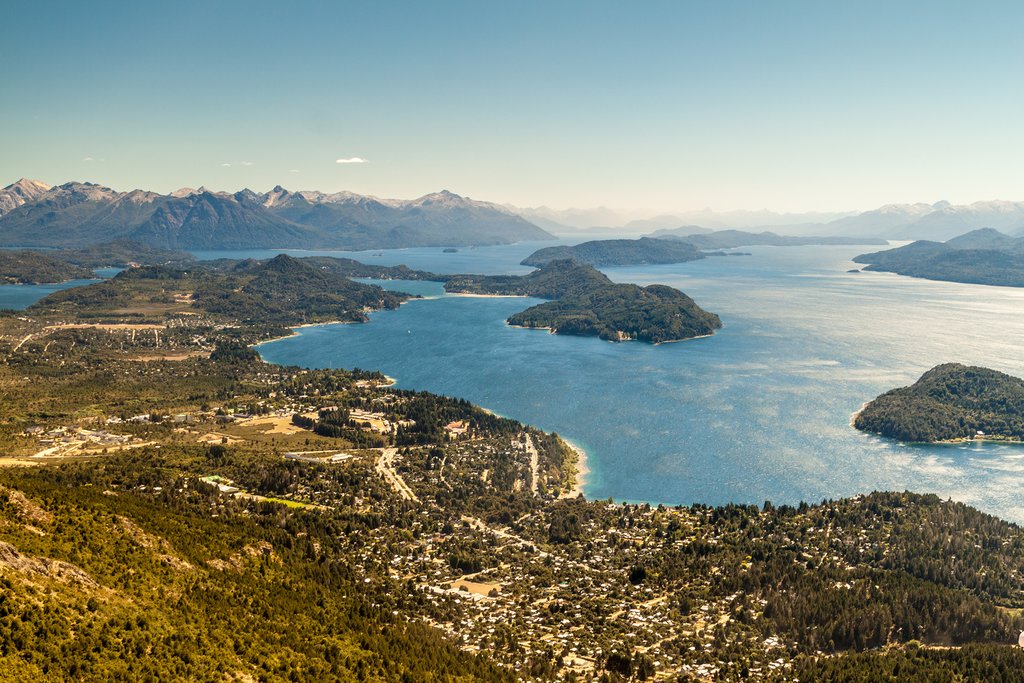
Bariloche, a charming city nestled within Argentina’s Lake District, serves as an excellent introduction to the wonders of Patagonia. This region marks the transition from the flatlands of the Pampas around Buenos Aires to the mountainous wilderness that defines much of the southern cone. Situated on the southern shore of Lago Nahuel Huapi, within the national park of the same name, Bariloche was established in 1903 as a winter retreat for Argentina’s elite. Its reputation for exceptional ski conditions soon spread internationally, transforming it into a global destination.
Each year, visitors from around the world flock to Bariloche to experience the slopes of its most famous mountain, Cerro Catedral. First-time visitors will immediately notice the distinct Swiss influence in the city’s charming alpine architecture, a direct result of the immigrants who founded Bariloche. This influence is reflected in the numerous chocolate shops and fondue restaurants that dot the town, adding to its unique character and appeal.
### Puerto Madryn/Península Valdés: A Haven for Marine Wildlife
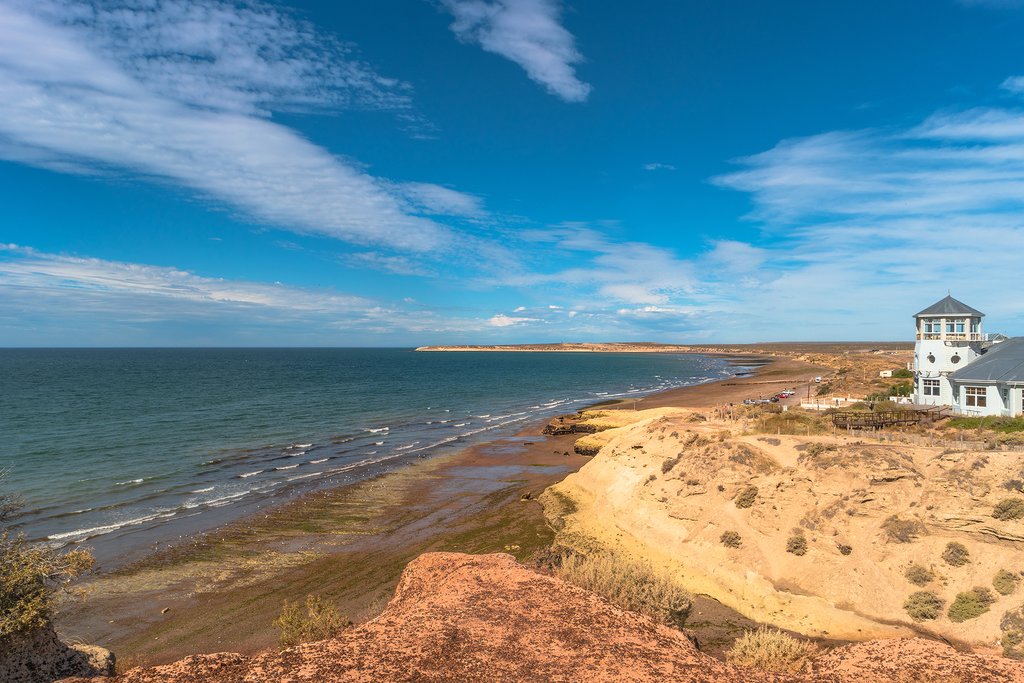
Puerto Madryn is an ideal Patagonian travel destination for anyone with an interest in marine biology and exotic animals. It’s a charming seaside town of about 70,000 and is located on Argentina’s Atlantic Coast. Moreover, it’s the principal base of operations for excursions to the adjacent Península Valdés, a UNESCO World Heritage Site and haven for various types of marine mammals and birds.
The best way to visit the area is on an organized boat tour, as the peninsula is privately owned. These tours are incredible because they pass by the rugged shores of the Golfo Nuevo north to the white cliffs of the peninsula. Here great populations of seals and penguins come to breed on the secluded shores, and in the spring months, southern right whales pass by during their migration. Dolphins and orcas are common sites here as well. Some typical Patagonian mammals you’ll likely see on land are rheas, guanacos, and armadillos.
The season for whale-spotting on Península Valdés is between September and November. During this period, the waters surrounding the peninsula teem with marine life, offering unparalleled opportunities for wildlife observation and unforgettable encounters.
### Los Glaciers National Park: A Realm of Ice and Adventure
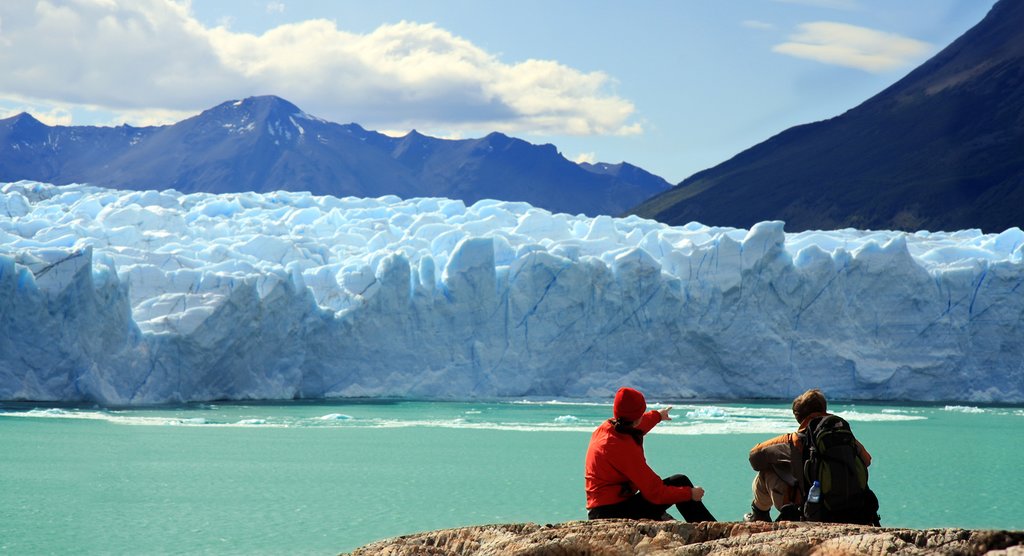
Los Glaciers National Park stands out as a region with a well-developed tourism infrastructure, attracting visitors from across the globe who seek to witness its awe-inspiring glaciers and embark on epic trekking adventures. The park’s captivating landscapes and abundant natural beauty make it a must-visit destination for nature enthusiasts and adventure seekers alike.
Geographically, this expansive park spans 7,269 square kilometers (2,806 square miles) in Argentina’s southern Patagonia region, sharing 170 kilometers (105 miles) of its border with Chile. Almost half of the park is covered by the 370-kilometer-long (105 miles) Southern Ice Cap, from which 13 major glaciers (47 total) originate, feeding the two largest lakes within the park: Lago Argentino in the southeast and Lago Viedma to the northeast.
Within this vast expanse, two primary destinations cater to travelers: El Calafate and El Chaltén. El Calafate serves as a city and embarking point for excursions to glaciers Upsala, Moreno, Spegazzini, and the iconic Perito Moreno. This 250-square-kilometer (96-square-mile) mass of ice is one of the most impressive sites in the country, boasting massive ice walls that rise an average of 74 meters (242 feet) above the water. Witnessing the “calving” of giant chunks of ice breaking off from this immense wall and plunging hundreds of feet into the lake below is an unforgettable sight and sound.
El Chaltén, on the other hand, is a small tourist town that serves as a base for hiking, trekking, and camping excursions to nearby Mt. Fitz Roy (3,405 meters/11,171 feet). The impressive Fitz Roy Massif, with its jagged peaks protruding from the mountain like giant arrowheads, is an unmissable sight. Day treks from town lead to Laguna Capri and Mirador Laguna Torre, both offering panoramic views. Other incredible day treks pass by glacial lakes, ice caps, and rivers. Climbing Fitz Roy, weather permitting, is also an option, with the best time being between mid-February and the end of March. However, it’s crucial to note that this activity is suitable for experienced climbers only, as fatalities have occurred in the past.
The primary reasons to visit this region include glacier spotting, glacial hikes (offering the unique experience of hiking on the surface of glaciers), mountain climbing, camping, and trekking. The area also provides access to the famed Ruta 40, the great lonely highway that cuts from Argentina down into Chile, surrounded by the dry Patagonian steppe. The panoramic landscapes along Ruta 40 are truly unforgettable.
### Tierra del Fuego/Ushuaia: At the End of the World
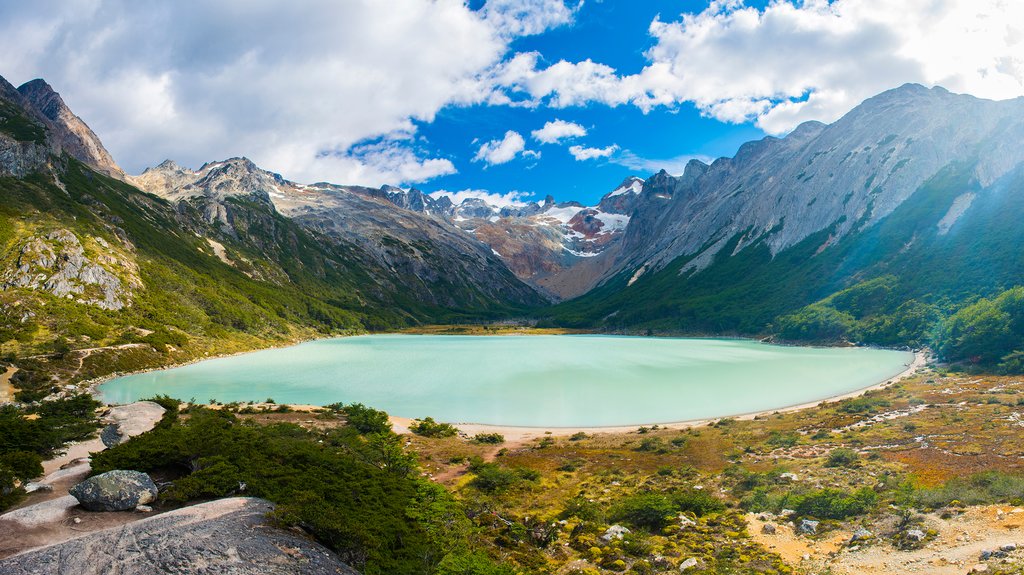
Tierra del Fuego, meaning “land of fire,” is as close as you can get to the end of the world before reaching Antarctica, drawing visitors year after year. Even within rugged Patagonia, this region stands out as the most rugged. Charles Darwin himself described Tierra del Fuego as a place where “Rock, ice, snow, wind, and water, all warring with each other yet combined against man, here reigned in absolute sovereignty.” From the jagged peaks of the Dientes de Navarino mountain range to the choppy waters of the Beagle Channel, named after the famous ship, the elements here are indeed extreme.
Tierra del Fuego encompasses an archipelago at the southernmost mainland point on the continent. Here, you’ll find Ushuaia, the southernmost city in the world, a port city of about 60,000 people with a rich indigenous influence from the Yaghan people. The city is renowned for its excellent seafood, particularly centolla (king crab). Besides the city, visitors come here for nature excursions into Tierra Del Fuego National Park, and you can also trek up to glaciers, like Martial and Marinelli.
Overall Tierra del Fuego is an excellent destination, offering a comprehensive Patagonian experience with glaciers, national parks, lakes, camping, and wildlife spotting.
## Chilean Patagonia: Unspoiled Wilderness and Natural Beauty
Chilean Patagonia offers two principal attractions: its national parks and its vast expanses of unspoiled nature. While many are familiar with famous destinations like Torres del Pain National Park, thousands of kilometers of virtually unexplored wilderness lie between this trekking mecca and the northernmost reaches of Chilean Patagonia, near the Lake District city of Puerto Montt. The mountains and native lenga forests inspire awe with their natural beauty, and the rivers are unlike anywhere else in the world.
The main activities for which this region is ideal are trekking, camping, fishing, river rafting, and long-distance cycling trips. The primary reason to visit many parts of Chilean Patagonia is to escape the tourist crowds and immerse yourself in the region’s pure natural beauty.
Chilean Patagonia shares similarities with its Argentine counterpart but also possesses its distinct character. Often overlooked due to its narrow land mass and smaller size, Chile’s portion boasts 17 national parks between the start of the region at the Carretera Austral highway and the Beagle Channel, located in the far south. Here are some highlights of the area.
### Los Lagos: Lakes and Volcanoes
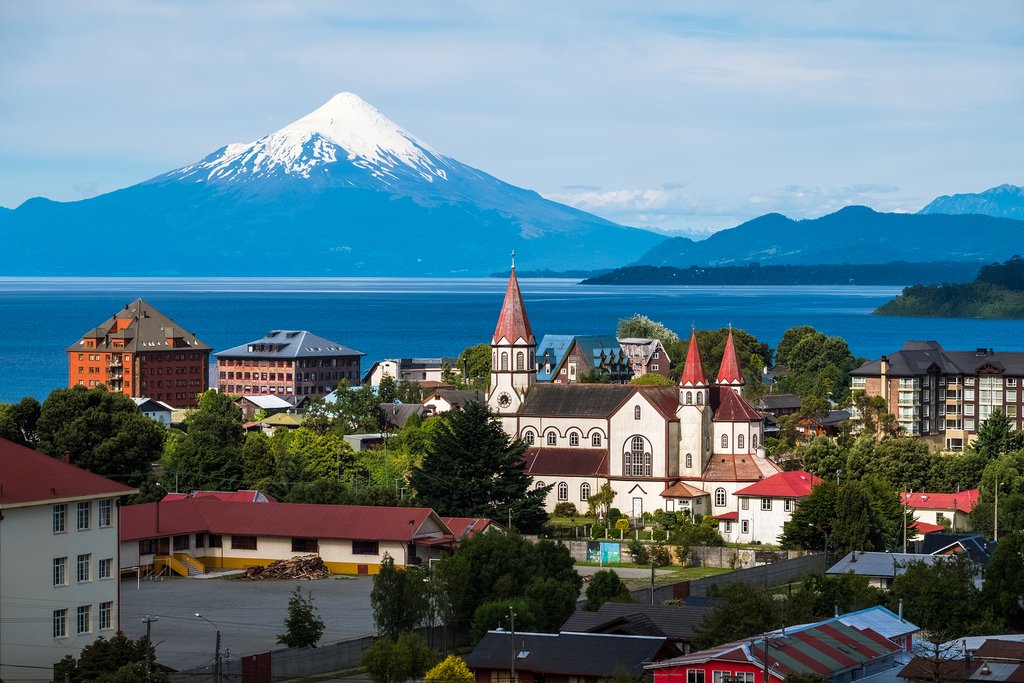
The “lakes” area of Chile sits beside Argentina’s Lake District, technically part of the same geographic region. Like its Argentine counterpart, it boasts numerous beautiful lakes, including Llanquihue, Todos los Santos, Villarica, and others. Adding to the allure are the snow-capped volcanoes that overlook the shores of these bodies of water, most notably Osorno and Villarica, the latter of which had a major eruption as recently as 2015. Despite the volcanic activity, you can still book hiking excursions up these monoliths on guided trekking tours.
Many throwback villages on the shores of the aforementioned lakes offer great destinations to relax for a few days. In places like Puerto Varas and Pucón, a slow pace of life prevails, and the architecture of the churches and buildings reflects the influence of early German immigrants to Chile. Then there’s the nearby island of Chiloé, a small stretch of hilly green land with its own cuisine (lots of seafood) and culture heavy on myths, like the witches that supposedly roam the coastline after dark.
Los Lagos is also where Puerto Montt is located. This city is noteworthy as nearby you’ll find the beginning of the Carretera Austral, an all-weather highway that runs for 1,240 km (770 miles) south deep into Patagonia, making it a great cycling trip.
### Torres del Paine National Park: A Trekker’s Paradise
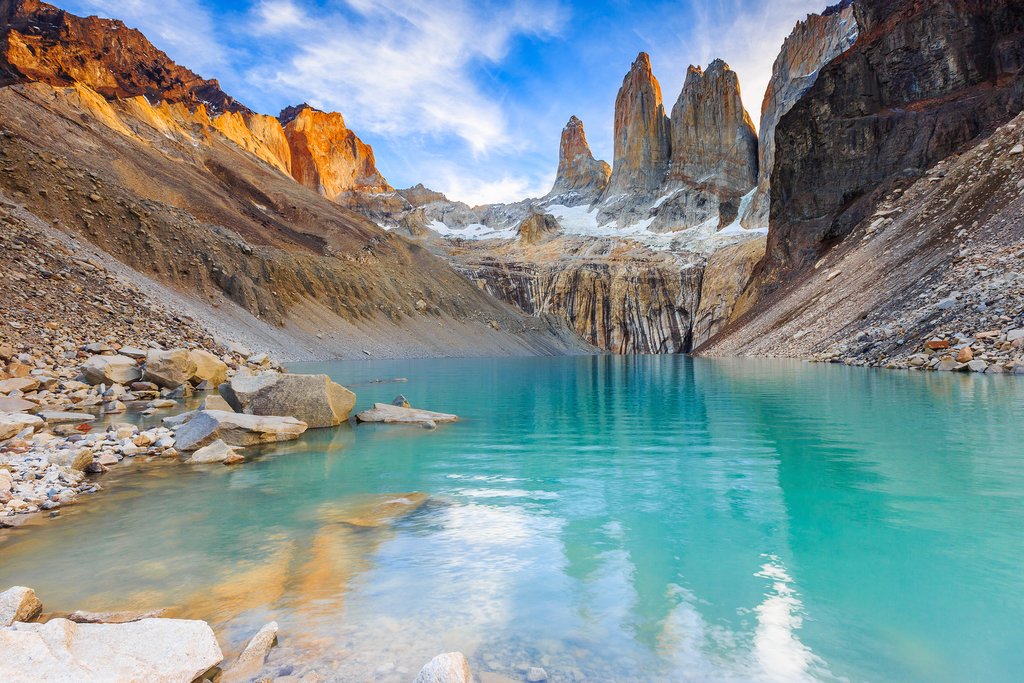
Torres del Paine National Park, a protected area on the Southern Patagonian Ice Field near the border with Argentina, symbolizes the difference between “hiking” and “trekking.” This 1,814-square-kilometer (700-square-mile) park is a true trekking destination, offering rugged adventures through wild landscapes, often lasting for days.
The park’s appeal lies in its diverse trekking routes, the most famous being the W circuit. This multi-day adventure traverses a significant portion of the park in a “W” formation, typically lasting about five days but potentially completed in as little as three. The trek runs from the southwest of the park to the northeast.
A variation of the W circuit is the O circuit, following a circular path through the park rather than just a W shape, encompassing the W trail. This 130 km (80-mile) loop takes the average trekker eight days and seven nights to complete, starting at the Hotel Las Torres and running counterclockwise around the back of the park before joining the W circuit route and finishing at the hotel. This trek is geared toward experienced hikers with a good level of physical fitness.
The highlights are too numerous to list, but some major sites include the French Valley with its hanging glacier, lakes Nordenskjold and Pehoé, and the glacially fed Lago Grey. The glacier of the same name flows out into the sea, with portions of its jagged walls calving off into the deep grey waters below.
The most impressive site is the Paine Massif, with three granite peaks rising straight into the sky like broken horns, earning them the local name Cuernos del Paine (“horns of Paine”). You don’t have to embark on the entire W Circuit to reach this site. The most popular day hike in the park leads to the Ascencio Valley and the base of the massif, where you’re greeted with a silver lagoon at the foot of the giant horns. This vigorous hike, about 8-9 hours over 17 km (10.5 miles), requires a decent level of physical fitness.
Ultimately, Torres del Paine is for those who love to experience nature on foot, offering unparalleled trekking opportunities and breathtaking scenery.
### Aysén: The Undiscovered Gem
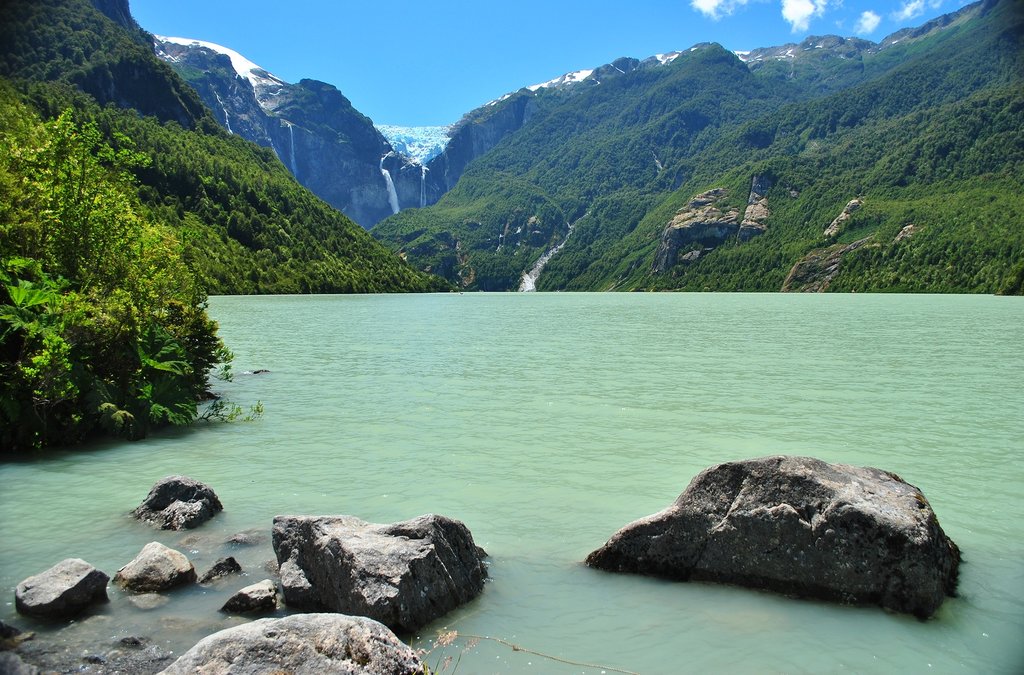
If Torres del Paine is the famous celebrity of Chilean Patagonia, then the Aysén region is its undiscovered gem. While more travelers are venturing to this Pacific coastal area, it remains remote and less accessible, ensuring fewer tourists than elsewhere.
Located in the northern Patagonian region of Chile, between the city of Puerto Montt and the southern outpost town Villa O’Higgins, the Aysén Region lies in the Northern Patagonian Ice Fields. The landscapes are as vivid and evocative as those in the south and Tierra del Fuego, but they are totally distinct. Here, you’ll find fjords, crystalline rivers, volcanoes with smoky peaks, and golden poplars blooming in spring. Trek through rocky valleys up to expansive glaciers, most notably Glaciar Exploradara, and raft some of the most incredible rivers, like Río Futaleufu.
Other highlights of the region include Lago General Carrera, with its bright azure waters and the unique Capillas de Mármol—towering marble caves that shine iridescent in the light. A newer addition to Aysén is Parque Patagonia, a grassland restoration project created in 2000 by the Tompkins Conservation group. The park aims to conserve 640,000 acres of unspoiled Patagonian steppe, grasslands, glaciated peaks, and local wildlife in Aysén’s fertile Valle Chacabuco. Visitors are welcome, with a network of hiking trails and campsites throughout the park.
This region also offers one of the best road trips on the continent along Ruta 7, or the Carretera Austral. This highway runs through some of the most remote and wild wilderness in South America, stretching 1,240 km (770 miles) from Puerto Montt down to its terminus at Villa O’Higgins, the last Chilean town in northern Patagonia. From there, you can cross the border into Argentina and El Chaltén on horseback, by bicycle, or on a trekking excursion.
The reworded text has a word count of 3937.
B-2025

